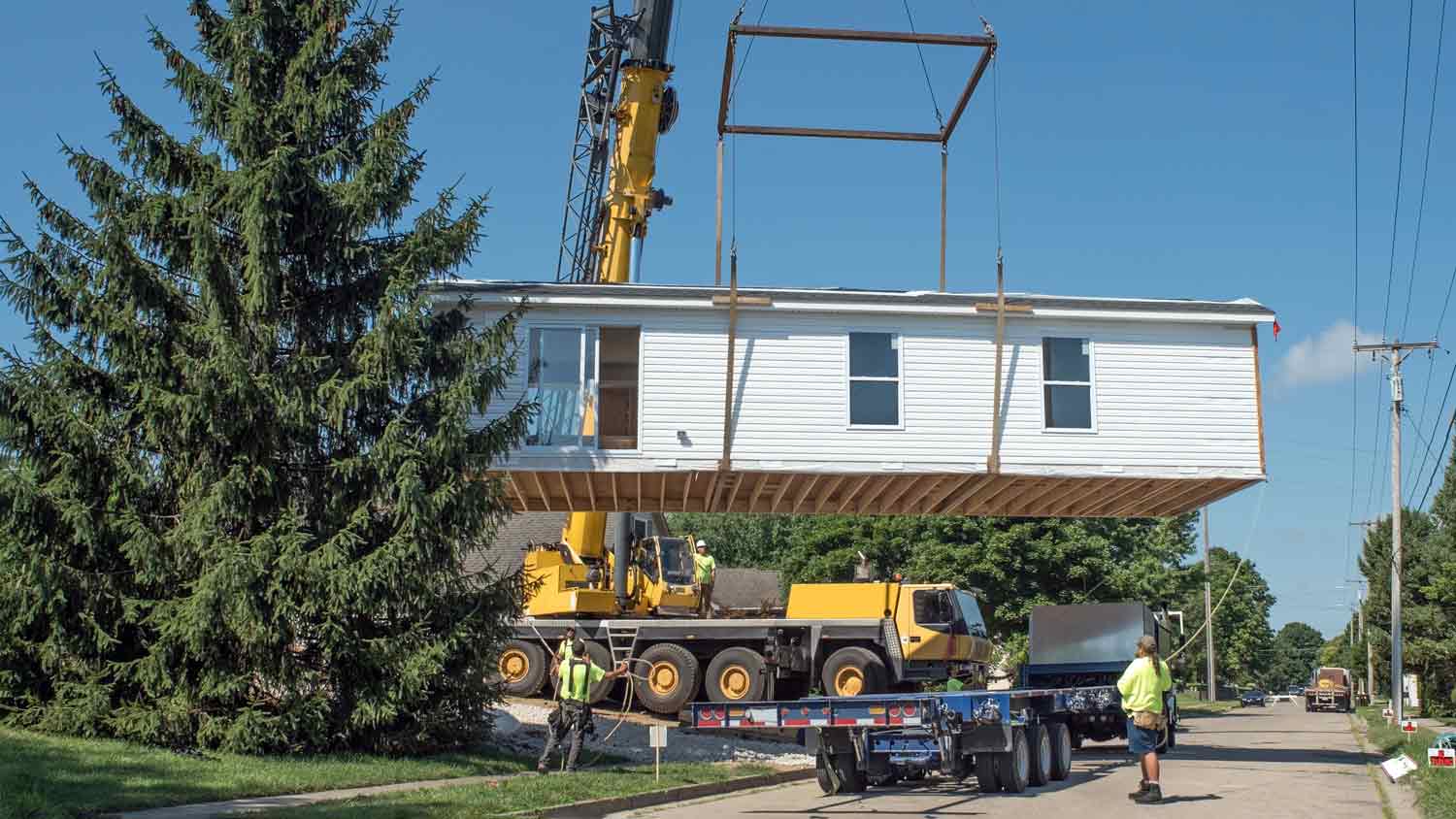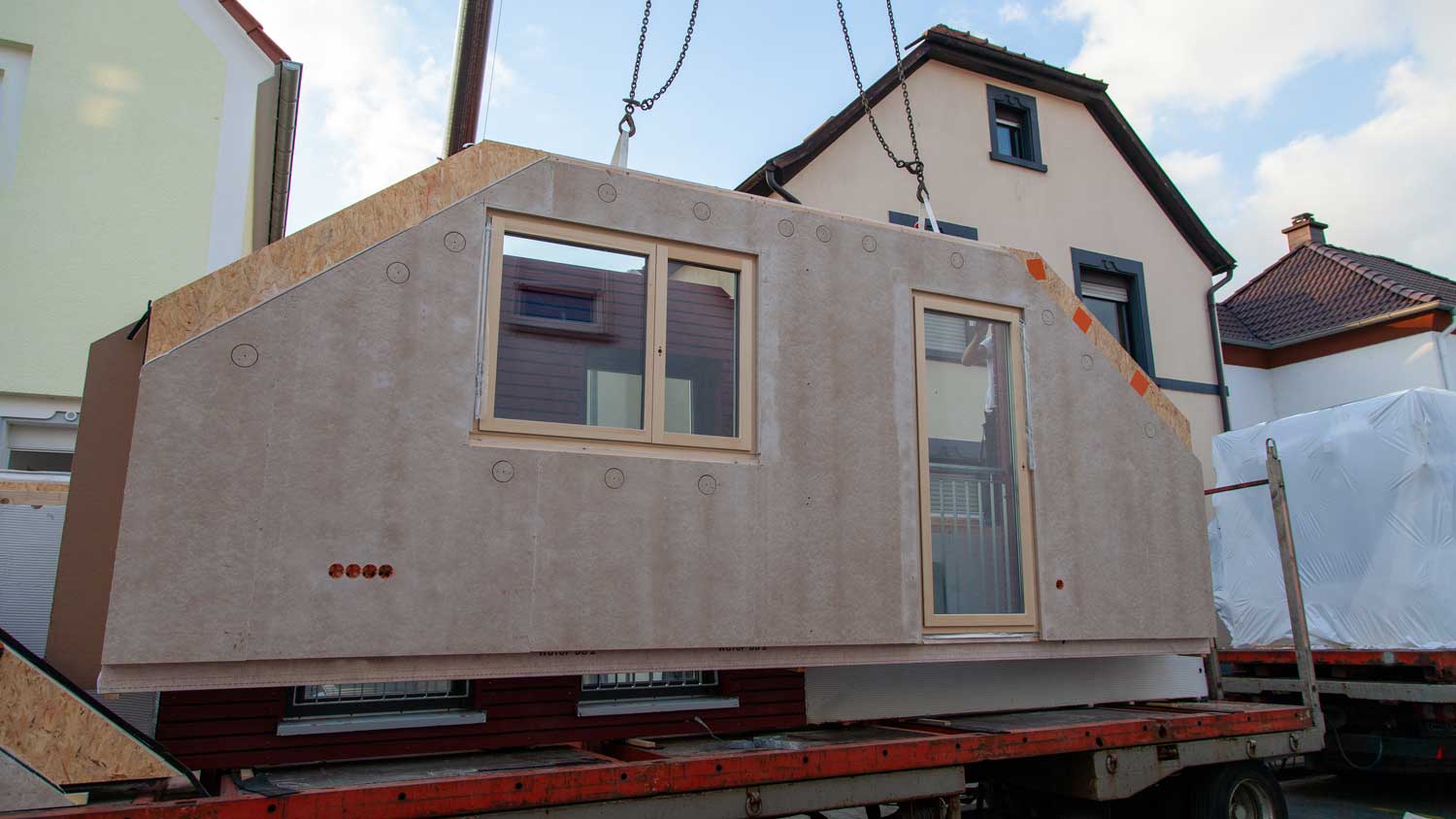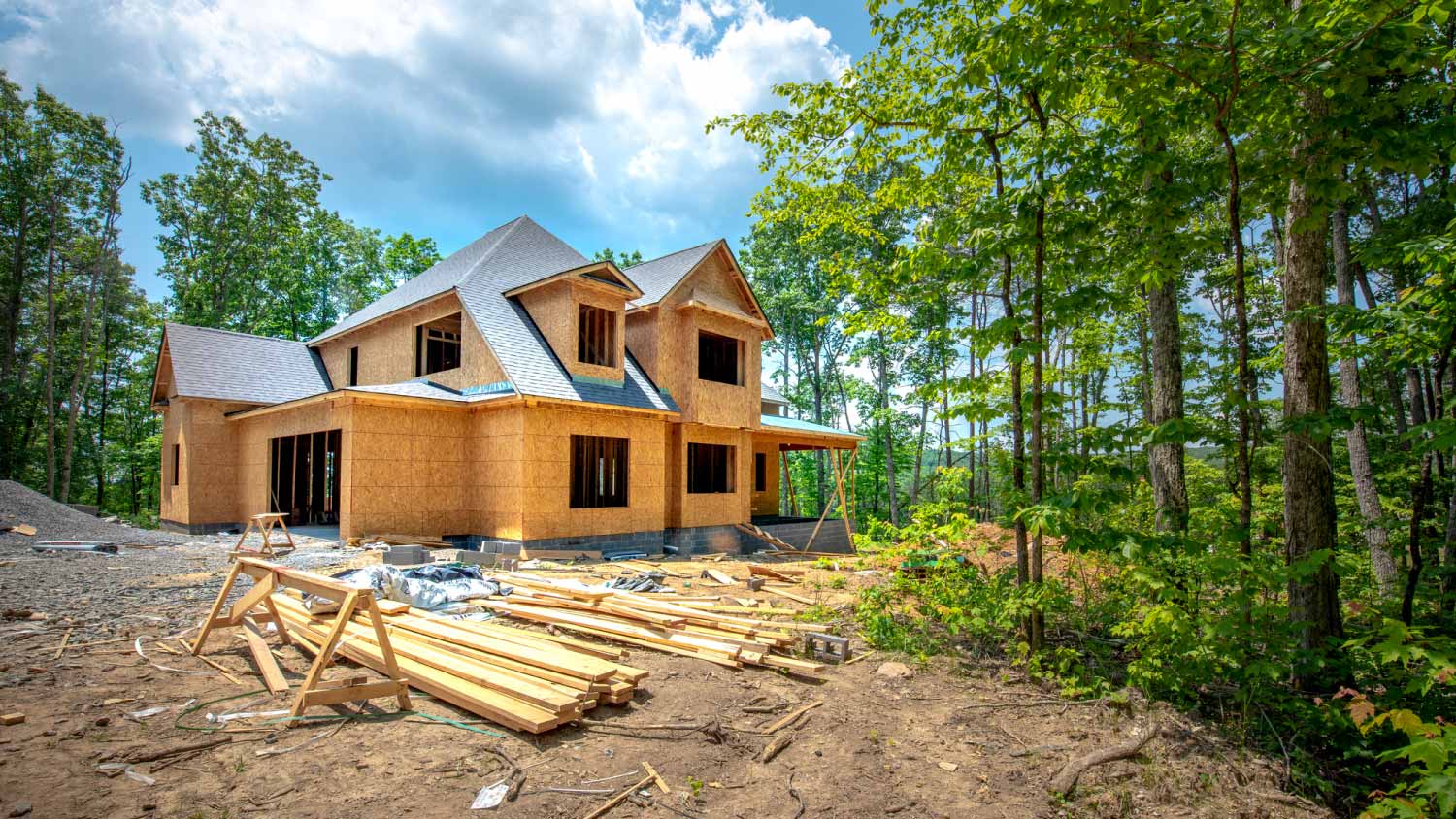
Having a dedicated space to retire after a day in the pool may seem like a pipe dream. Learn about pool house costs to see if you can make that dream a reality.
These pre-constructed homes are pretty fab


Prefab and modular homes are both types of pre-constructed structures.
Modular homes use prefabricated segments (modules) that are assembled at the final site.
Prefab homes do not use modular design and are constructed off-site and installed at the final building location.
If you’re building a custom home, you may encounter prefab and modular homes, but it can be difficult to tell the difference between the two. These two types of pre-constructed homes have a lot in common—with some key differences. Modular homes are a type of prefab home, but not all prefab homes are modular. Even more confused now? Our guide breaks down these two types of homes so you can see how prefab and modular homes compare.
While all modular homes are prefabricated—or “prefab”—there are other types of prefab homes besides modular homes. Modular homes are manufactured in a factory as rooms or sections, called modules, which are shipped to the home site and assembled together to form the home. Prefab homes are also manufactured off-site, and can either be assembled from individual components at the site or transported fully assembled to the final location.
Whichever type of prefab home you choose, you’ll need to hire a contractor to assemble and install your home according to the manufacturer’s instructions.

A prefab home consists of manufactured components designed to be assembled together to form a complete house. Types of prefab homes include modular homes, mobile or manufactured homes, panel and kit homes, tiny houses, and more. Prefab homes may be shipped in sections or individual components or transported fully assembled to the house site.
| Pros | Cons |
|---|---|
| Quick construction | Less customization |
| Lower cost | Land costs and prep |
| Consistent quality | Transportation and assembly |
Best for:
Those who already own land
Prospective homeowners who want a new build in a short amount of time
Those who don’t need much customization
One of the biggest benefits of prefab homes is their speedy construction. Prefab homes can be completed and move-in ready within three to six months, only about a third of the time it takes to traditionally build a home. They also cost less than traditionally built (also called “stick-built”) homes, averaging about $40 to $300 per square foot, compared to $100 to $500 per square foot for traditionally built homes.
Consistency is also an advantage when it comes to prefab homes. Because each component is manufactured and assembled in one place, quality and consistency are closely monitored, and you won’t need to wait to source one missing component or hard-to-get material.
With the lower price tag of prefab homes also comes some drawbacks. Because prefab homes are manufactured according to very specific plans, there’s little room for customization. You may be able to choose between several different models of homes, but generally can’t make changes to the plans once you select one.
While prefab homes are significantly less expensive than traditionally built homes, you’ll need to own the land your home is being built on, too. When you purchase a stick-built home, the land is typically part of the transaction, but for prefab homes, it’s separate. You’ll also need to worry about transportation and assembly logistics—the more completely the home is assembled before leaving the manufacturer, the harder it is to transport.

A modular home is a type of prefab home that’s manufactured in sections and assembled at the final home site. The sections themselves may be customizable, and you can configure various sections together to make up the design of the house. Once the modules arrive at the final site, your contractor will connect them together and hook up the utilities to construct your home.
| Pros | Cons |
|---|---|
| Customizable | Land costs and prep |
| Fast assembly | Zoning or financing restrictions |
| Lower cost | Lower resale value |
Best for:
Those who want a more customizable prefab option
Homeowners on a short construction timeline
Those looking for a traditional home look at a lower cost
Modular homes cost an average of $20 to $340 less per square foot than stick-built homes, offering significant cost savings. They’re also much faster to build than stick-built homes and other kinds of prefab homes, since the preconstructed sections are much larger and just need to be attached and installed on the land. Modular homes also offer a higher level of customization than other types of prefab homes, since different modules can be added to fine-tune your home design.
Like other kinds of prefab homes, you’ll need to purchase land separately in addition to your house purchase. You may also run into restrictions from lenders on financing modular homes, or from municipalities regarding zoning, so check with your lender and your local zoning authority to ensure you’re in compliance. Modular homes can also have a lower resale value than stick-built homes, so that’s something to keep in mind when it comes time to sell.
In many categories, there’s no clear winner between modular homes and other types of prefab homes, but there are a few areas where there’s enough of a difference that you may want to choose one type of home over the other.
Modern prefab and modular homes are available in a wide range of styles and are often indistinguishable from stick-built homes by appearance. Both types of homes can look great and reflect your own design style.
Modular and other prefab homes are a great value, costing significantly less than stick-built homes. If budget is a concern, either type of home is a great option for a new home without breaking the bank.
Modular homes have an edge when it comes to customization. Prefab homes are available in various styles, but not much customization is available for individual models. Modular homes, on the other hand, allow you to add and configure modules to customize your layout and finished design.
Unless you purchase a fully assembled prefab home that’s transported to the home site in one piece, modular homes are easier and faster to install than other kinds of prefab homes. Because modular homes are transported in larger sections rather than individual components, local custom home builders who specialize in modular homes can have your new home put together and move-in ready much faster than stick-built homes. Make sure the contractor you hire to build your house has worked with modular homes before so you don’t run into any unexpected challenges.
All kinds of prefab homes, including modular homes, have a lower resale value than stick-built homes. This is partially due to a lingering stigma about prefab homes—even though modern prefabs can be top-quality—but also due to the difficulty with financing, land ownership, and other issues unique to prefab homes.
From average costs to expert advice, get all the answers you need to get your job done.

Having a dedicated space to retire after a day in the pool may seem like a pipe dream. Learn about pool house costs to see if you can make that dream a reality.

The cost to build a root cellar depends on size, location, materials, and other variables. Our guide will help you decide which option is best for you.

Dreaming of building your own home from the ground up? Learn how much it costs to build a house yourself and if it’s worth it to skip the pro on this project.

Building your dream home starts with hiring a builder. Here is how to find a builder who understands your needs and preferences for your brand-new home.

Discover how much it costs to build a cottage. Learn about average prices, cost factors, and tips to budget your cottage build with confidence.

Dreaming of a custom home but not sure where to start? Use this guide on building a custom home to stay organized and ensure you have all your bases covered.